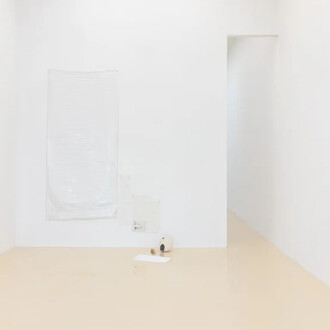Beyond the Streets & Control Gallery are pleased to announce Exhibition 010: Graffiti Archive 1972/73, an unprecedented glimpse into the raw, untamed world of New York City's graffiti scene during the pivotal years of 1972 and 1973. Curated from the late artist Gordon Matta-Clark's photographic archives, the show presents over 200 carefully selected photographs, many of which have never been revealed to the public until now.
In the summer of 1972, the then-29-year-old Matta-Clark began to photograph the city’s exploding graffiti movement. As a lifelong downtown New Yorker, he had seen the city before graffiti, something that was not the case for the many artists who as young adults flocked to New York in the early 1970s. Matta-Clark’s native New Yorker artistic bohemian pedigree was strong. He may have been the only artist at the time who had an artistic aim rather than an aim to document the movement. His lens was that of an artist, not of a scholar. With a kind view of graffiti at the time, he felt it was a kind of people’s art revolution that took back the city and beautified it on the participants’ terms. The graffiti that Matta-Clark found was fresh and full of adolescent fun and creativity and incorporated many of the early standard hallmarks of graffiti today: 3D, characters, arrows, and connections between the letters.
By the late 1960s, the graffiti scene in New York City had remained relatively unchanged for centuries. However, in the mid-1970s, a remarkable transformation occurred as teenagers turned ordinary graffiti into a burgeoning art form. This rapid evolution marked one of the swiftest developments in the realm of art movements. Only a limited number of forward-thinking individuals in New York recognized the potential of capturing the captivating chaos displayed on walls and subways through photography. The subset that not only recognized but also actively documented this burgeoning graffiti movement between 1970 and 1975 was quite small. Depending on your interpretation of “substantial,” this number might be in the single digits. Gordon Matta-Clark belonged to this select group, capturing over 2,000 images of New York City graffiti between 1972 and 1973.
Working closely with the estate of Gordon Matta-Clark, Beyond the Streets brings this remarkable collection to light, offering art enthusiasts, historians, and urban culture enthusiasts an unparalleled opportunity to witness the evolution of street art through the eyes of a true visionary.
What really resonates with me is the sense of pride I feel to be able to share these photos. It's not just about showcasing graffiti—it’s a genuine homage to real history, a glimpse into the 'who,' 'what,' and 'where' of these vibrant stories etched onto walls and trains. I can't help but feel happiness, knowing that Gordon Matta-Clark had the foresight to capture these moments and his estate entrusted us to put this show together—it has truly felt like a collaboration. Throughout the years, I’ve invested considerable time into unearthing vintage gems from the early '70s—drawings, paintings, and ephemera that tell stories of a bygone era. This exhibition, for me, is like revealing a well-kept secret, placing these treasures in their genuine context.
(Roger Gastman)
The exhibition preserves moments of rebellion, self-expression, and cultural commentary that defined a movement, will also display original, vintage artworks from artists whose work is immortalized within Matta-Clark’s photographs, including two dozen large-scale paintings and drawings from the early 1970s by Snake 1, SJK 171, Lee 173rd, Wicked Gary, Tracy 168, and Stay High 149, amongst several others. The show transcends traditional exhibition boundaries with an immersive academic exploration that creates a bridge between the past and the present, featuring meticulous curation from Roger Gastman to present original works in situ through Matta-Clark’s lens.
Born in New York City in 1943 to artists Roberto Matta and Anne Clark, Gordon Matta-Clark came of age during a time of political turmoil against a backdrop of urban infrastructure in crisis. He studied architecture and graduated from Cornell University in 1968, returning to his native New York City the following year. Struck by the inability of Modernist forms to provide solutions to the city's increasing social problems, he began to combine his activist concerns with his artistic production. He helped establish alternative spaces such as 112 Greene Street, and the Food Restaurant in SoHo and engaged with peer artists and non-artists in collaboration that aimed to improve their surroundings.
In the 1970s, Matta-Clark experimented across various media and began staging monumental interventions and smaller-scale installations in the charged city landscape, bringing attention to New York's failing social policies, displaced people, and abandoned spaces. He also implemented several important interventions across Europe, in Milano, Paris, Antwerp, and Kassel. Gordon Matta-Clark died from cancer in 1978 at the age of 35.
In 2007, Gordon Matta-Clark: You Are the Measure was the first full-scale retrospective organized by the Whitney Museum of American Art, New York, which traveled to the Museum of Contemporary Art, Los Angeles, and the Museum of Contemporary Art Chicago. From 2009 to 2010, Gordon Matta-Clark: Undoing Spaces—the first major survey of his work in South America—toured to the Museo Nacional de Bellas Artes, Santiago; Museu de Arte Moderna, São Paulo; Paco Imperial, Rio de Janeiro; and Museo de Arte de Lima.
Recent institutional exhibitions were held at Museu Serralves, Porto, Portugal (2017), and The National Museum of Modern Art, Tokyo (2018), which marked the first full-scale retrospective of the artist’s work in Asia (titled Gordon Matta-Clark: Mutations in Space). In 2017-2020, Matta-Clark’s work was the focus of a critically acclaimed traveling exhibition, Gordon Matta-Clark: Anarchitect, that was on view at The Bronx Museum of the Arts, New York; Jeu de Paume, Paris; Kumu Art Museum, Tallinn, Estonia; and the Rose Art Museum, Brandeis University, Waltham, Massachusetts.



















